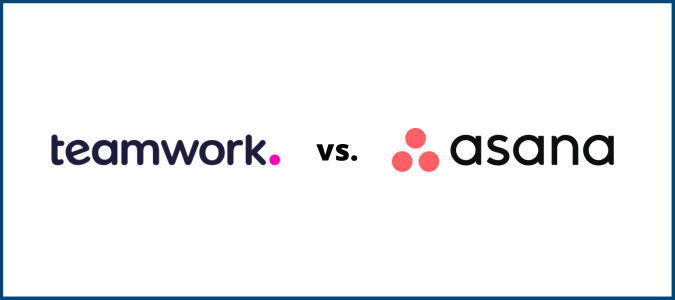No project manager wants to find themselves at the helm of disastrous projects that stray off the approved budget and delivery deadline.
Imagine having a $36.75 billion budget. But when the project ended—it was six years later than planned—and the cost skyrocketed to $105 billion.
Yup, that’s a 186% hike from its planned value and is essentially a disaster. That actually happened with the international space station project.
The good news, if you turn to a project management discipline like earned value management, you can avoid a similar crisis.
This guide will give you all you need to understand earned value management and how you can use it to measure project performance and progress to ensure better results.
Why Earned Value Management Is So Important
Earned value management or EVM is a project management methodology that combines schedule, cost, and scope to measure project performance—each aspect helps keep things on track by enabling project managers to predict situations and adjust accordingly.
It lets you work out burn rates for cost and performance, which helps you understand how exactly the project is performing compared to the original plan. Using the value management methodology, you can work out the following:
- Where has the project been?
- Where is the project now?
- When is the project going?
EVM has four main components that give you key insights. They are:
Budget at Completion
Budget at completion is the sum of all budgeted activities scheduled up to a specific date. It can be current or a cumulative amount.
Budgeted Cost of Work Scheduled
The Budgeted Cost of Work Scheduled, also known as Planned Value or PV, represents the total budgeted cost of the work to be performed as per the plan. Just like the budget at completion, the budgeted cost of work scheduled can be current or cumulative.
Budgeted Cost of Work Performed
The Budgeted Cost of Work Performed, also known as Earned Value or EV, shows you all the tasks that have been completed up until now. This is dependent on your current state.
Actual Cost of Work Completed
The Actual Cost of Work Completed means the total amount of actual work on tasks is completed to date. Again, this can be either current or cumulative.
By looking at all the above different elements, you can decide whether a project is on schedule or over or under the budget and see how the performance is for both these things simultaneously.
Taking these figures and applying them to their remaining project or future work lets you predict how things will turn out in terms of cost, performance, and scheduling—assuming the burn rate doesn’t fluctuate.
No doubt, the whole thing is one big assumption. Precisely why you must be flexible and aware of how changes can impact these elements.
To sum everything, EVM helps you stay on budget and on time.
You can use it to track the cost and schedule associated with the project by comparing the current state of a project against original plans and projections. This, in turn, helps you make crucial adjustments that make your projects more likely to be successful.
The Benefits of Earned Value Management
Below shows a list of the seven key benefits you can expect by adopting this project management strategy:
- Better upfront planning
- Maintain objectivity by understanding where your project stands currently versus where you planned it to be at that point and how much work your team has actually completed versus what you had projected to complete
- Simplified project management
- Increased accountability, where managers and employees honestly and accurately track the time and report their progress
- Identifying problem areas early on in the development and implementation phases, which, in turn, boosts progress
- Better anticipation of problem areas
- Help boost employee morale and make your team more agile
The key here is examining the total amount of value that has been added (the earned value) at every stage of the project by the work done at a specific point. Project managers can then “micro-schedule” projects without micro-managing to control budget and schedule at every step.
Using project management software tools is always a great idea to boost productivity and ensure better results without delays or errors.
Let’s talk about Aston Martin, for instance.
The luxury car manufacturer company relies on the Microsoft Office Project, an EVM tool, to collaborate and deliver new and innovative vehicles with greater efficiency and resources—from conception to production.

Every person is given their own isolated plan of activities about what they must do with their respective departments. This is then rolled up in the cloud to let everyone see an overview of all the activities and progress made for every car. Everyone involved in the project can see and monitor every step that needs to happen to get the car to the end.
Mark Stringer, the director of program management at Aston Martin Lagonda, points out that Microsoft Project helps them see where a process or person is going wrong even before it happens, making it easier for them to catch and remedy errors early.
As a result, the whole team can be more efficient, make better-informed decisions, and even cut down costs involved in taking products through production. Each of which helps them become a more profitable business.
Similarly, you can also use EVM software tools to predict situations better, which could work wonders for your company’s survival.
How to Improve Earned Value Management Today
Earned value management involves measuring and benchmarking project performance and progress against a well-defined plan. It’s also why you can only use EVM in organizations with certain key elements in place.
Below, we’ve discussed five ways in which you can improve and value management today. Let’s take a quick look.
Accurately Identify the ‘What’ Element of the Project
You must carefully analyze and identify the scope of your project, along with requirements and scope definition. For this, we recommend developing three crucial documents:
Work Breakdown Structure (WBS). You can create a WBS by dividing high-level deliverables into smaller work packages. It’s a graphical representation of the work set out that clarifies the project’s scope.
Organization Breakdown Structure (OBS). You can create an audience, like an organizational chart, to show the people, teams, and departments that hierarchy, rules, and responsibilities. This document mostly represents the ‘who‘ element of the project.
Responsibility Assignment Matrix (RAM). You can interpose the WBS and OBCs to create the RAM document, which defines exactly which task will be performed by phone. You can then use these mappings or control accounts to measure progress in future stages.
Improved Planning, Scheduling, and Budgeting
EVM is designed to define the project baseline in concrete terms and set parameters to help monitor and control the project throughout its life cycle.
The WBS, for instance, is a good starting point for the planning stage. You can group multiple activities under a single work package and then group multiple work packages under a single control account. You can also assign an account manager to every control account to monitor overall progress.
At this point, you should be able to define the ‘when‘ element for both high- and low-level milestones and assign due dates for every activity.
Make sure you apportion the total budget at every activity level inside a work package, including labor, material, and subcontracting costs. Allocating management reserves for unexpected scope increases is also wise.
Account for ‘Actual’ Costs
Cost calculation under EVM is pretty comprehensive and is designed to measure the actual cost of the project. It’s important to have systems in place that track costs at the work level to measure progress accurately, but this doesn’t come without its fair share of challenges.
For instance, you may be incurring or paying out the actual costs at a later date instead of clearing them right away. However, you must allocate a portion of this amount earlier to calculate the earned value. Therefore, it’s better to account for accruals and avoid similar booking lags.
Analyze and Report Project Performance Consistently
You should report the PV, EV, and AC calculations consistently to ensure every team member, senior leader, and customer has full visibility into project progress. This will also enable you to identify the corrective action you must take as a measurement against the baseline and reporting numbers.
Another tip is to define your variance thresholds carefully. Doing this will help you spot problem areas easily whenever the cost performance reports indicate a threshold breach in a control account.
Revise Project Baselines Only When Necessary
Always be flexible when designing your project baseline, especially when handling problem areas during a project. After all, you cannot revise a baseline every time there’s a delay in a task or when you overspend.
It’s better to limit baseline revisions in cases of authorized changes in the project scope, cost, or schedule. Fluctuations in rates is also an acceptable scenario to revise a project baseline.
3 Best Practices for Earned Value Management
Here are three best practices that can help you get the most value by adopting an earned value management system.
Using an Independent Third Party for Conducting EVM Analysis
Hire an independent third-party that has the necessary qualifications to open acting the requirement analysis. It’s best to look for hands-on “doers“ who have previously used sophisticated project management software and have experience in integrated baseline reviews (IBRs), EVMS compliance reviews, and surveillance reviews. Experience with a broad range of scheduling, cost management, performance analysis, and risk management tools is another plus.
It’s better to have experienced practitioners with an intrinsic understanding of what clicks and what doesn’t. This can help you maximize productivity and avert crises more effectively.
Maintain and Periodically Update the EVM System Description
Having an EVM system description allows you to understand every activity required to meet the EVMS standard and functions. You can also communicate the process within your organization and the customer and review team more efficiently.
The system description should define the management processes and include detailed procedures to define specific steps.
Although there’s no specific government requirement for an EVMS description, you must demonstrate compliance. It’s common for companies to do this in a form that provides a description of the EVMS system and the contractor’s comprehensive plan for meeting the guidelines.
Invest in a Good EVM Solution for Your Projects
EVM is one of the most accurate techniques for project forecasting, but it’s still complex.
Luckily, you’ll find several EVM solutions in the market that offer extensive support for all levels of EVM, ranging from basic support to measure project performance to ensuring EIA-748 standard compliance. They also make accurate calculations faster and keep all relevant data properly organized.
While you’re at it, make sure the software tool of seamless integration with ERP and financial systems as well, along with additional features to track actual costs and resource expenditures.
There are all kinds of EVM software tools in the market, so you won’t find yourself facing any shortage of options. Just make sure your perspective tool fits your budget and integrates seamlessly with other processes and software you use.















